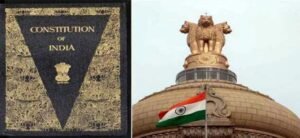Uniform Civil Code: Legal Viability and Societal Ramifications
Written by Varnika Chauhan
Table of Contents
- Introduction
- Constitutional Basis of UCC
- Current Legal Landscape: Personal Laws in India
- Legal Viability of UCC
- Societal Ramifications of Implementing UCC
- International Context
- Recommendations for a Balanced UCC Framework
- Conclusion
Introduction
The concept of a Uniform Civil Code (UCC) has long been one of the most debated and polarizing issues in Indian legal and political discourse. Envisioned under Article 44 of the Indian Constitution, the UCC aims to replace personal laws—based on the scriptures and customs of various religious communities—with a common set of secular civil laws applicable to all citizens, irrespective of religion. These laws would govern areas like marriage, divorce, inheritance, adoption, and maintenance.
While the UCC promises equality, national integration, and gender justice, it also raises concerns over religious freedom, cultural diversity, and social harmony. This article explores the legal viability of implementing the UCC and examines its potential societal ramifications in the Indian context.
Constitutional Basis of UCC
Article 44 of the Constitution, under the Directive Principles of State Policy (DPSPs), states:
“The State shall endeavour to secure for the citizens a uniform civil code throughout the territory of India.”
Though not enforceable by courts, Article 44 reflects the aspirational vision of the Constitution’s framers to establish a common civil law framework for all Indians. The tension lies between this goal and the fundamental right to religious freedom guaranteed under:
- Article 25: Freedom of conscience and the right to freely profess, practice, and propagate religion.
- Article 26: Right of religious denominations to manage their own affairs in matters of religion.
Current Legal Landscape: Personal Laws in India
India currently follows a pluralistic legal system in civil matters:
- Hindu personal law: Codified under the Hindu Marriage Act (1955), Hindu Succession Act (1956), etc.
- Muslim personal law: Based on Shariat and uncodified in many aspects, except areas like triple talaq (now outlawed).
- Christian personal law: Governed by the Indian Christian Marriage Act (1872) and Indian Divorce Act (1869).
- Parsi personal law: Governed by the Parsi Marriage and Divorce Act (1936).
This mosaic of laws leads to inconsistencies and inequalities, especially regarding gender rights in marriage, divorce, and inheritance.
Legal Viability of UCC
1. Constitutional Mandate vs. Fundamental Rights
While Article 44 envisions a UCC, critics argue that enforcing a single code could infringe upon Articles 25 and 26. However, the Supreme Court has maintained that religious freedom under Article 25 is subject to public order, morality, and health, and does not prevent the state from enacting secular civil laws.
- In Sarla Mudgal v. Union of India (1995), the Court emphasized the need for a UCC to prevent misuse of personal laws and ensure gender justice.
- In Shayara Bano v. Union of India (2017), the Supreme Court struck down instant triple talaq, highlighting that personal laws must conform to constitutional values.
Thus, the judiciary has indicated that civil laws can be secular, even if they touch upon religious practices, provided they promote equality and justice.
2. Precedents and Partial Implementations
India already applies uniform laws in several areas:
- The Indian Penal Code (IPC) applies uniformly to all citizens.
- The Special Marriage Act (1954) provides a secular framework for inter-religious and civil marriages.
- The Goa Civil Code, a legacy of Portuguese rule, is often cited as a functional example of a UCC, though it has exceptions and is not truly uniform.
These instances suggest that the legal framework exists for implementing a UCC, but the challenge lies in ensuring consensus, inclusivity, and respect for diversity.
Societal Ramifications of Implementing UCC
1. Gender Justice and Equality
One of the strongest arguments in favor of UCC is that it would eliminate gender-based discrimination inherent in many personal laws. For example:
- Muslim women face unequal inheritance rights under traditional interpretations of Sharia.
- Hindu women gained equal coparcenary rights only recently through amendments.
- Christian women have faced discriminatory divorce laws.
A UCC could provide equal rights across all communities, ensuring constitutional guarantees of equality under Article 14 and non-discrimination under Article 15.
2. Communal Sensitivities and Minority Rights
Opponents fear that UCC may be used to impose the majority’s customs on minorities, thereby eroding cultural and religious identity. For instance:
- Some Muslim organizations view UCC as an attempt to dilute Sharia.
- Tribal communities worry about losing their traditional inheritance and marriage practices.
To address this, a consultative and inclusive approach is crucial, ensuring that minority concerns are respected and accommodated.
3. National Integration and Legal Uniformity
Proponents argue that a UCC would foster national integration, streamline legal processes, and reduce legal pluralism and forum shopping. A uniform framework would also simplify the justice delivery system, especially in family law matters.
However, legal uniformity must not come at the cost of social cohesion. A gradual and consensus-based implementation is essential.
4. Political and Electoral Implications
UCC has become a politically sensitive issue, often invoked during elections. While some parties support it as a step toward modernity and reform, others oppose it as a threat to secularism and pluralism. The debate often gets polarized, hindering meaningful discourse.
International Context
Many countries have uniform civil laws, including France, Germany, the United States, and Turkey. Even Muslim-majority countries like Tunisia and Egypt have codified civil laws that depart from strict interpretations of Sharia.
India, as a secular democracy, can craft a UCC that respects diversity while upholding fundamental rights—drawing from comparative models but rooted in Indian constitutional values.
Recommendations for a Balanced UCC Framework
- Codify Common Minimum Standards
Begin with areas where consensus is likely, such as maintenance, age of marriage, and divorce procedures. - Protect Cultural and Tribal Autonomy
Recognize the rights of tribal and customary communities under the Fifth and Sixth Schedules of the Constitution. - Ensure Extensive Consultation
Involve religious scholars, civil society, women’s groups, and legal experts in the drafting process. - Phase-wise Implementation
Start with voluntary adoption, possibly through amendments to the Special Marriage Act or creating a model civil code. - Safeguard Religious Freedom
Maintain a clear distinction between secular civil law and religious practices—regulating only those religious practices that affect public order, health, or fundamental rights.
Conclusion
The Uniform Civil Code remains a constitutional ideal and a contentious reality. Its implementation requires a delicate balance between ensuring legal uniformity and equality, and preserving the pluralistic ethos of Indian society. The question is not whether India needs a UCC—but how to craft one that is inclusive, just, and reflective of the country’s diverse cultural fabric.
For the UCC to succeed, it must not be seen as a tool for assimilation, but as a framework that respects differences while promoting equality and dignity for all. Only then can it truly fulfill its constitutional promise.




